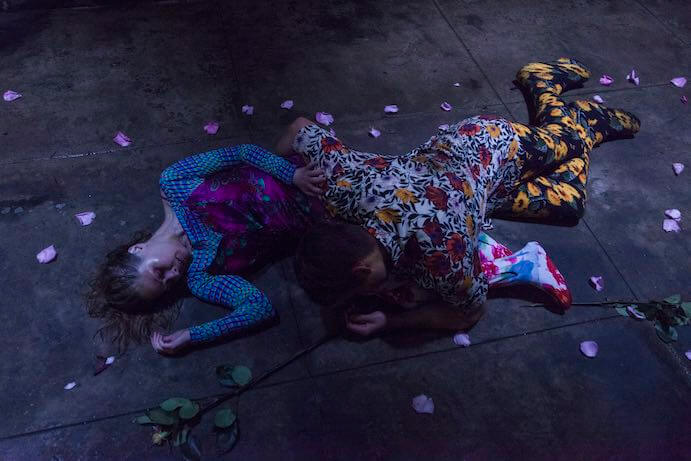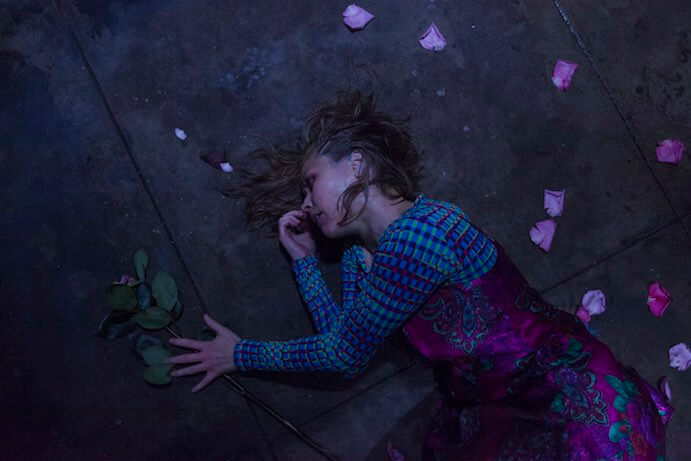On Friday, June 8th, sometime around sunset, a small crowd began to gather just inside the imposing gothic entryway of Brooklyn’s famous Green-Wood Cemetery. Chatting lightly in amongst the lithic forest of obelisks, urns and tombstones, this intrepid group was not waiting to perform a Victorian-style seance, but had come to experience an opera. Indeed, ‘experience’ may be an understatement as the work, the world premiere of David Hertzberg’s The Rose Elf, was fully staged within the murky adit of Green-Wood’s subterranean catacomb in a production designed and directed by R. B. Schlather.
The Rose Elf is the first event in a new series being presented in a collaboration between Unison Media and Green-Wood Cemetery called The Angel’s Share. A sister series to the award-winning Crypt Sessions (presented from within the crypt beneath the Church of the Intercession in Harlem), The Angel’s Share is curated by contemporary classical music’s own crypt keeper, impresario Andrew Ousley, and will continue to be staged from within the gallery of the Green-Wood catacomb.
Once the evening’s attendees had finished arriving, the group was conducted to a scenic spot overlooking the cemetery’s famous chapel to enjoy a tasting of Virgil Kane whiskeys, light snacks and be granted sufficient time to absorb the solemn atmosphere. Timing was tightly regulated and with the modest reception lasting around an hour, glow sticks were distributed to the group who were then organized to depart promptly at 8:30 for a twenty-minute foot journey to the mouth of the catacomb, arriving just as the early summer twilight began to transition into night.

Samantha Hankey as The Rose Elf–Photo by Matthew Placek
Hertzberg’s opera is an hour-long movement, broken into a sort of prologue and two main sections performed without interruption. While the piece is rife with text, the program only contained an abstract summary of the action outlined in twenty lines of poetry penned by the composer. The story is taken from Hans Christian Anderson’s The Elf of the Rose, a short, tragic story about the folly of love and jealousy complete with deceit, murder, a disembodied head buried in a flower pot and the magical woodland creatures who observe these shenanigans from the relative sanctuary of the flower petals they inhabit. In Hertzberg’s operatic reimagining, many of the more vivid images (such as the royal army of bees who avenge the murder of the male protagonist by stinging his killer to death) are reduced to highly sexualized abstractions, dictated by the rambling libretto and emphasized by the Martha Graham-esque body language of the cast.
The work is scored for a modest nine-piece orchestra expertly conducted by Teddy Poll. The nonet resounded within the space like a symphony orchestra, and was never unbalanced or overwhelming in testament both to Hertzberg’s skilled writing and the surprisingly effective acoustic of the unconventional space. The four vocal roles were performed by soprano Alisa Jordheim (The Girl/Luna), tenor Kyle Bielfield (The Beloved/Horus), bass-baritone Andrew Bogard (The Brother and aforementioned murderous villain) and mezzo-soprano Samantha Hankey as the titular Elf. Carrying the significant weight of the vocal element and acting as a kind of Greek chorus throughout, Hankey’s engaging presence and exquisite instrument endowed her with a shrewd ability to guide the listener through the underlying dramatism of the work. As she paced up and down the gallery, following, leading and at times becoming physically entangled within the orgiastic trio of siblings and lovers she was wont to observe, her portrayal of the dilemma of the Elf grounded the arc of the story even at its most abstract moments.
The trio of Jordheim, Bielfield and Bogard were equally fantastic. They each dove fearlessly into the demanding physicality of their combined roles, leaping in and out of tombs and going so far as to writhe about and drag one another along the grimy floor of the catacomb’s gallery. Despite a somewhat clichéd delegation of parts (the coloratura damsel, love-stricken tenor and villainous bass), Bielfield’s remarkable tenor cleanly balanced Jordheim’s treble and synthesized a believable chemistry that was easily disrupted by Bogard’s powerful bass. Indeed, one of the most striking moments in the work was Bogard’s first utterance, about a third of the way through the performance. As he lay face down on the stone floor, his deep, velvet tone consumed the space like a rolling clap of thunder, altering the timbral landscape in striking contrast with the twinkling, dreamlike sonorities Hertzberg had established to that point and fracturing the lovers’ duet with his character’s covetous agenda.

Alisa Jordheim and Kyle Bielfield in The Rose Elf–Photo by Matthew Placek
It was, ironically, the space that felt the most constricting and ultimately underutilized. Long periods of monotonous staging and blocking could not be carried by Hertzberg’s luscious orchestration or the superior ability of the cast alone. With only occasional expansion into the areas outside the main gallery, where the audience was arranged in two single facing ranks along each wall, the majority of the action was limited to pacing up and down the tunnel.
As a result, the most striking moments of the production felt like bookends, beginning at the top with the emergence of the Elf, silhouetted in a shaft of dazzling light at the mouth of the catacomb’s gallery and concluding with the destruction of The Brother, who was smothered by an endless cascade of flowers falling from an illuminated shaft in the roof before the final disappearance of the cast through the glowing portal of a tomb at the center of the catacomb.
Perhaps the biggest risk in choosing such a location is the challenge of ensuring that the presentation live up to and exceed the novelty of the setting. Nonetheless, the thoughtful organization of the entire evening (concluded by a torch-lit stroll back to the gates among whispering oaks twinkling with fireflies) clearly established the strong potential of this exciting new series, which is overall off to a strong start. There is no doubt that as this series continues to evolve it will settle comfortably into this wonderful space where innovation has already overcome mere novelty.





















